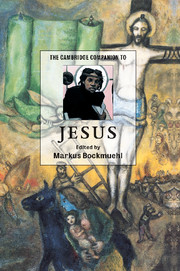3 - Jesus and his God
from Part I - The Jesus of history
Published online by Cambridge University Press: 28 May 2006
Summary
Although Jesus of Nazareth is arguably the world’s most influential historical figure, there is no agreed understanding of his aims, message and legacy. If we paint with rather broad strokes, we may divide interpretations of him into two camps. On the one hand, while traditional Christianity has described Jesus with a variety of images, it has regularly and persistently confessed him in terms of his divine identity as Lord, Saviour of the World, Son of God and, in the words of the Nicene Creed, ‘very God of very God’. On the other hand, Jesus has also been characterised not so much as one to be revered and worshipped, but rather as one who taught a way of worshipping and following God. Under this rubric he has been thought of as mystic, moral teacher, religious visionary, political and social reformer, cultural critic and renewal movement leader.
Are these portrayals of Jesus mutually exclusive? If, for example, one understands Jesus primarily as a religious figure to whom worship and faith are directed, then is it also possible to speak of him as a prophet and teacher of a way of worship and faith? For some scholars who pursue historical reconstructions of Jesus, the goal of this quest is to strip away the creedal accretions and affirmations of faith that have shaped the gospels and subsequent Christian belief in order to discover the ‘genuine’ historical figure of Jesus beneath the layers of confession. Finding this Jesus at odds with the Christ of the church’s faith, they prefer him as an example of faith to be imitated or a teacher of truth and of a way of life to be admired. So, for example, Adolf von Harnack, a German scholar of the late nineteenth and early twentieth centuries, asserted that ‘The Gospel, as Jesus proclaimed it, has to do with the Father only and not with the Son’ (Harnack 1957:144).
- Type
- Chapter
- Information
- The Cambridge Companion to Jesus , pp. 41 - 55Publisher: Cambridge University PressPrint publication year: 2001
- 1
- Cited by



